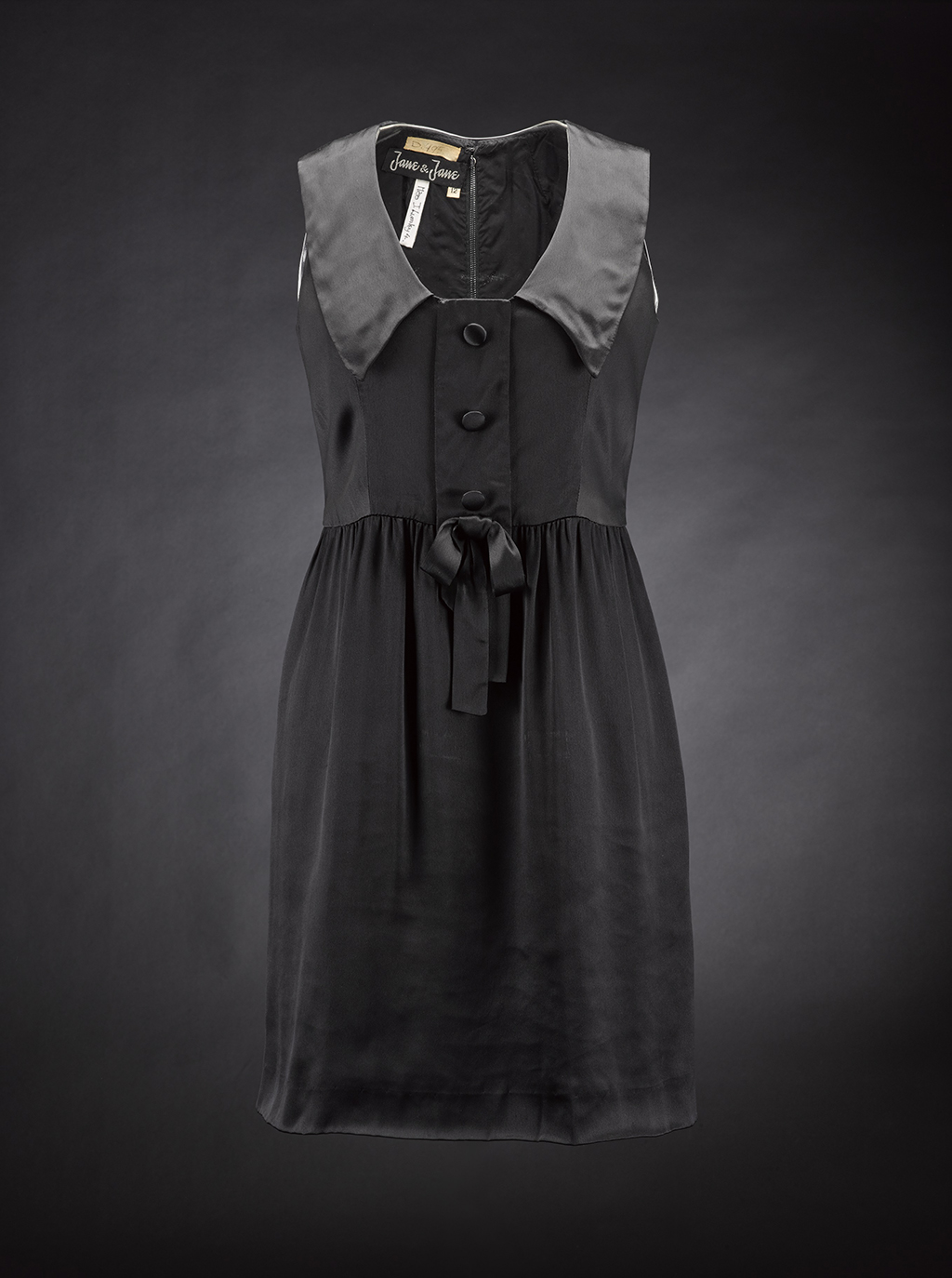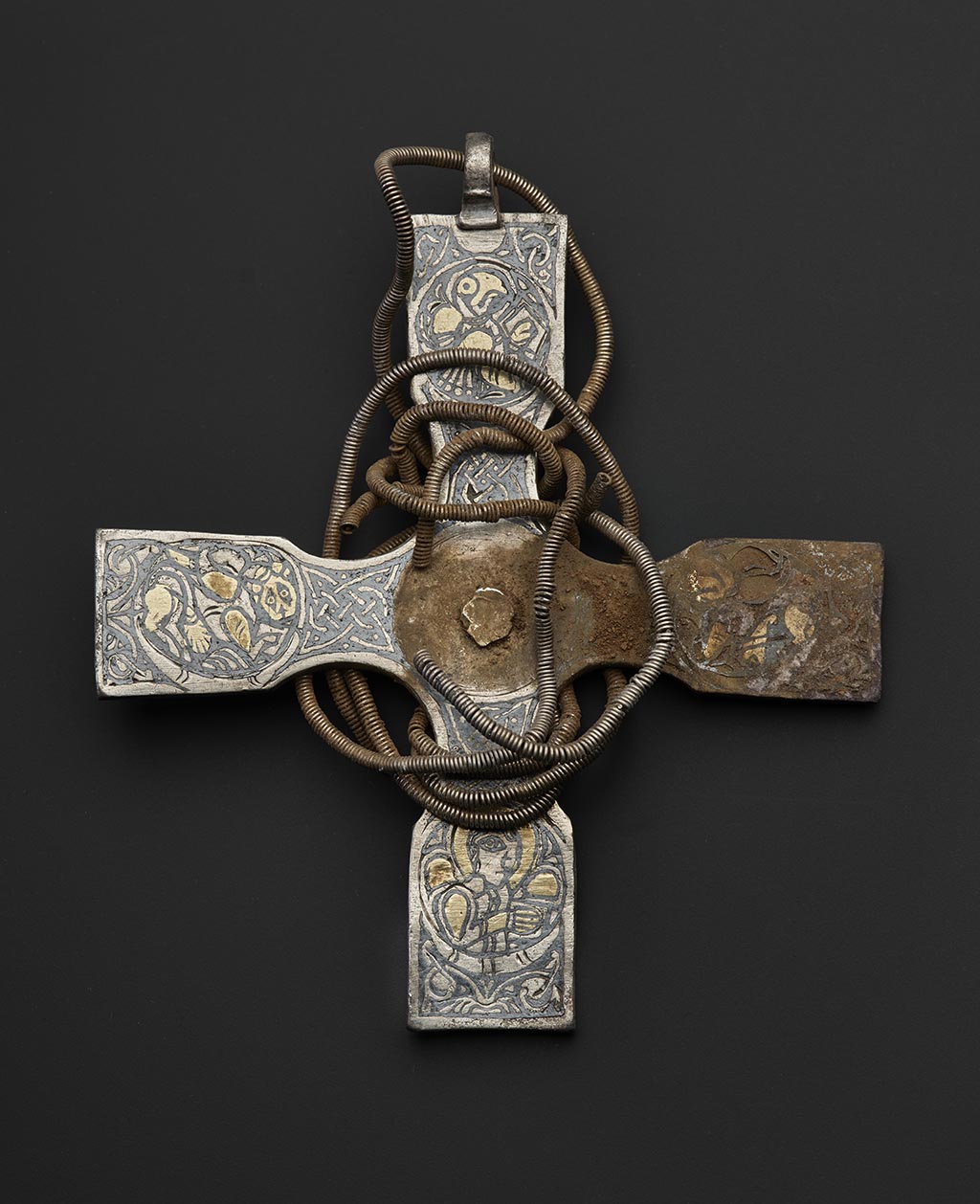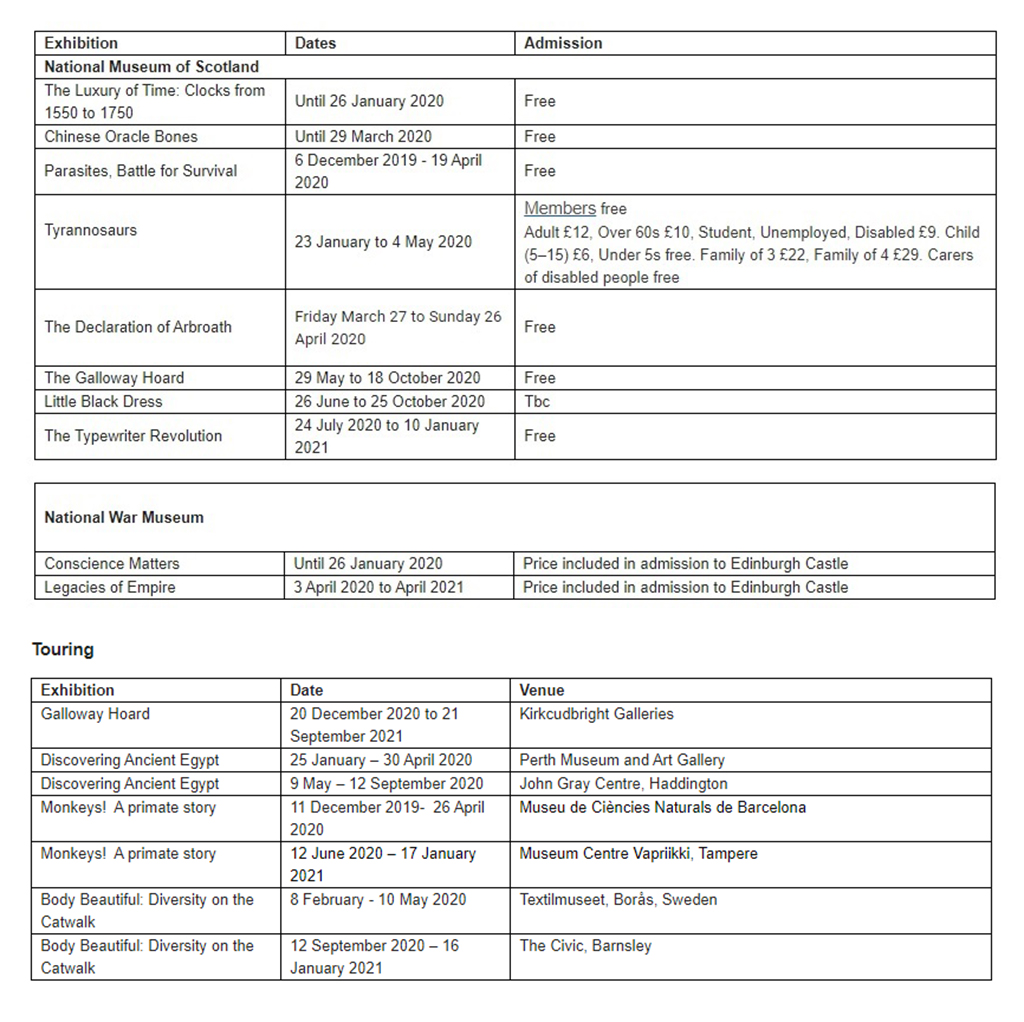
Something for everyone at National Museums Scotland
National Museums Scotland’s 2020 exhibition programme will feature something for everyone, from dinosaurs to fashion – as well as The Declaration of Arbroath.
The newly-announced schedule includes fearsome predators, iconic fashions and archaeological mysteries in highlight exhibitions Tyrannosaurs, Little Black Dress and The Galloway Hoard.
The National Museum of Scotland – the most popular attraction in the UK outside of London – will showcase history, recent and past, Scottish and beyond, in its 2020 displays.
Dr Gordon Rintoul, director of National Museums Scotland, said: ‘National Museums Scotland’s collection is almost unique in its breadth and variety. Our innovative programme of exhibitions and events for the year ahead celebrates the diversity of our collection and curatorial expertise. In 2020 visitors will have the chance to explore the world of cutting-edge high fashion, discover fascinating insights into British military history and get up close to the most feared and revered dinosaur of them all.’
In 1926 Coco Chanel designed a simple, short black dress described by US Vogue as ‘the frock that all the world will wear.’ Nearly a century later, the ‘little black dress’ has become a wardrobe staple, a symbol of femininity and a byword for chic. Little Black Dress (26 June to 25 October) will tell the story of this iconic garment in high fashion, consider the role it has played in society and look at how technology is enabling designers to challenge entrenched notions of classical dress and upgrade the little black dress for the future. On display will be 60 iconic looks, including significant historic pieces by fashion houses such as Chanel and Dior alongside recent work by contemporary designers like Gareth Pugh, Christopher Kane, and Comme des Garçons.

A black satin dress, worn and owned by Joanna Lumley, designed by Jean Muir, c. 1964
The most comprehensive exhibition ever mounted on tyrannosaurs will make its only European appearance when it opens at the National Museum of Scotland in Edinburgh in January. Tyrannosaurs (23 Jan to 4 May) will explore the most feared and revered of all dinosaurs, bringing the latest discoveries in paleontology to life and challenging preconceptions about these ferocious predators. The exhibition will feature rare fossil specimens, cast skeletons including one of ‘Scotty’, one of the largest and most complete T. rex skeletons in the world, and incredible models of feathered dinosaurs.
The Galloway Hoard brings together the richest collection of rare and unique Viking-age objects ever found in Britain or Ireland. It is of international significance and will transform our understanding of this period of Scottish history. Buried at the beginning of the tenth century, it comprises in excess of 100 gold, silver and other items, some of which are unique. The Galloway Hoard: Viking-age Treasure(29 May to 18 October) will display the key elements of the hoard, place it in a wider historical context and showcase the conservation and research work which is being undertaken to understand the hoard and its secrets. Following on from its display in Edinburgh, it will tour to Kirkcudbright Galleries, The McManus: Dundee’s Art Gallery and Museum and Aberdeen Art Gallery. This tour is being funded with support from the Scottish Government.

A Galloway Hoard cross
The Declaration of Arbroath will be displayed at the National Museum of Scotland from 27 March to 26 April 2020, marking its 700th anniversary. The document has not been on public display for 15 years. The Declaration of Arbroath is one of Scotland’s most important historical documents, capturing a powerful call for the recognition of the Kingdom of Scotland’s sovereign independence.
Legacies of Empire (3 April 2020 to April 2021) will feature at the National War Museum. It will examine the varied motivations and circumstances around the acquisition of objects during colonial conflict by individuals in British military service. Showcasing the findings of a major Arts and Humanities Research Council Project, Baggage and Belonging: Military Collections and the British Empire 1750-1900. It will highlight collections arising from British military campaigns in Africa and India which are held by national and military museums in the UK. The appropriation of objects has been a common feature of the history of human conflict within and beyond Europe. The collecting of relics, mementos and memorials, as well as diplomatic gifts and the role of connoisseur collecting and purchasing of artefacts by officers stationed overseas will be explored.
The full exhibition programme is:

TAGS

